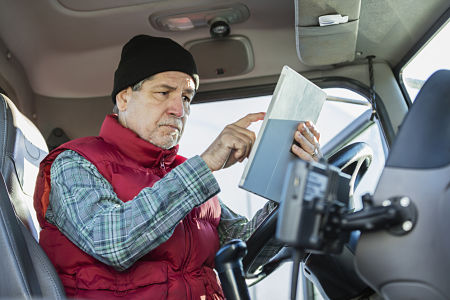Vision Zero for trucking facing monumental challenges
Vision Zero, the idea of eliminating highway fatalities and serious injuries, faces an uphill battle when it comes to heavy trucks operating on America’s streets and highways.
A case study conducted by VisionZero.org looked at early adopter cities such as New York, Boston, Washington, D.C., and San Francisco to review what safety improvements have occurred after the implementation of new safety policies.
The study looked at why large vehicle traffic, a common sight on U.S. city streets, is disproportionately involved in fatal crashes, particularly involving people walking and riding bicycles.
“In multi-modal, urban environments, the differences in speed, size and mass between large vehicles and the most vulnerable road users are significant and contribute to both the risk and severity of crashes. In order to achieve Vision Zero — the goal of eliminating traffic deaths and serious injuries — it is imperative that leaders prioritize large vehicle safety measures in plans to increase safety on their streets,” the study’s authors wrote.
Unlike other important Vision Zero strategies that require longer-term investments in infrastructure and culture change (both internally within city agencies and amongst the public), making relatively simple, inexpensive technology, policy, and training improvements to large vehicles can be a quick and easy win for cities, including those in the early stages of Vision Zero. In most cases, cities, regional governments, and transit providers have some degree of jurisdiction over their vehicles, whether in the form of contract agreements with vendors, procurement practices, or by operating and maintaining their own fleets.
The consequences to human life of a crash involving a truck are more severe than a comparable collision with a personal automobile, especially to vulnerable road users. Although large trucks comprise only 3.6 percent of vehicles in New York City, they are responsible for 32 percent of bicyclist fatalities and 12 percent of pedestrian fatalities. During a recent five-year period, 1,746 pedestrians and bicyclists in the U.S. were killed from impacts with large trucks, according to the National Transportation Safety Board.
The design of large trucks itself presents inherent safety challenges. Contributing design factors to these crashes include blind spots on trucks and the common occurrence of ‘side underride’ when a person is swept under the rear tires of a truck after side impact.
A suite of interventions is necessary to address this challenge, including driver training, education, infrastructure, and policy changes (such as restricting access to large vehicles on streets that prioritize pedestrian activity).
Additionally, there are a range of low-cost vehicle-based safety devices that can be retroactively installed on large trucks to immediately improve safety. These technologies include cross-over and convex mirrors, cameras, and alert devices that warn the driver of people in the truck’s path that may not be visible. One of the most simple and effective technology improvements to mitigate crash severity are side guards; panels installed between the wheels that help prevent people from being pulled under the large vehicle during a side-impact collision. Side guards have demonstrated success in averting underride incidences and greatly decreasing fatalities.
Automotive World recently published a special report on Vision Zero in trucking and suggests autonomous trucks may be the best long-term solution.
“At the heart of the sector’s ambitions lies automated technology, with everything from advanced driver assistance systems (ADAS) to Level 4 and 5 autonomy expected to play a part. However, the sector must realize that technology alone will not be enough,” the report states. “Implementation of safety-first cultures and driver training will also be key, as will clear regulatory guidance.”
Jose Holguin-Vera, director of the Center for Infrastructure, Transportation, and the Environment at Rensselaer Polytechnic Institute, believes e-commerce is a factor in the rise in truck-related crashes.
“The number of e-commerce deliveries is more than commercial deliveries, and that has increased rapidly over the last few years,” he said. “I would bet that this increase in deaths is related to increase in freight activity.”






